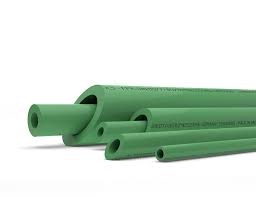Aug . 13, 2024 16:11 Back to list
PPR Pipe Solutions for Efficient Hot and Cold Water Systems in Modern Plumbing Applications.
Understanding PPR Hot and Cold Water Pipe Products
Polypropylene Random Copolymer (PPR) pipes have become increasingly popular in plumbing systems for both hot and cold water applications. With advancements in manufacturing technology and a growing awareness of environmental concerns, PPR pipes offer a range of benefits over traditional piping materials such as metal and PVC.
What is PPR?
PPR is a type of thermoplastic piping material that is lightweight yet durable. It is created through a polymerization process that gives it unique characteristics, such as high resistance to corrosion, chemical stability, and the ability to withstand high temperatures. This makes PPR an ideal choice for both residential and industrial water systems.
Key Benefits of PPR Pipes
1. Durability and Longevity PPR pipes are known for their robust nature. They resist impacts, stress, and temperature fluctuations, which adds to their lifespan. Most PPR pipe systems last for over 50 years, which is significantly longer compared to traditional piping materials.
2. High-Temperature Resistance PPR pipes can handle temperatures ranging from -40°C to 95°C. This makes them suitable for hot water applications, including heating systems, hot water supply lines, and radiant heating systems.
3. Corrosion Resistance Unlike metal pipes, PPR is not susceptible to rusting or corrosion, which is a vital advantage in water transport. This property ensures that the water remains clean and uncontaminated, which is crucial for both drinking water and other domestic uses.
ppr hot and cold water pipe product

4. Ease of Installation PPR pipes are lightweight, which makes handling and installation easier. They can be joined using a simple heat fusion method, which eliminates the need for additional fittings and reduces the chances of leaks. This not only cuts down on installation time but also decreases labor costs.
5. Environmental Impact PPR is considered an environmentally friendly choice as it is fully recyclable. When installed correctly, PPR pipes also contribute to energy-saving in heating systems, as they are excellent insulators that minimize heat loss.
Applications of PPR Pipes
PPR pipes can be utilized in various applications, such as
- Potable Water Supply Their non-toxic nature and resistance to bacterial growth make them ideal for clean drinking water systems. - Heating Systems They are commonly used in underfloor heating and other heating installations due to their high-temperature resilience. - Industrial Applications The chemical stability of PPR makes it suitable for transporting corrosive chemicals in industrial settings.
Conclusion
As the demand for reliable, efficient, and sustainable plumbing solutions grows, PPR hot and cold water pipe products stand out as a formidable choice. Their myriad benefits, including durability, high-temperature resistance, ease of installation, and environmental friendliness, position them as a practical alternative to traditional piping materials.
Whether you are considering a new installation or an upgrade of your current plumbing system, PPR pipes offer a long-lasting solution that meets modern standards of performance and sustainability. With their comprehensive features and advantages, they are set to shape the future of water delivery systems in both residential and commercial applications.
-
High-Quality PVC Borehole Pipes Durable & Versatile Pipe Solutions
NewsJul.08,2025
-
High-Quality PVC Perforated Pipes for Efficient Drainage Leading Manufacturers & Factories
NewsJul.08,2025
-
High-Quality PVC Borehole Pipes Durable Pipe Solutions by Leading Manufacturer
NewsJul.08,2025
-
High-Quality PVC Borehole Pipes Reliable PVC Pipe Manufacturer Solutions
NewsJul.07,2025
-
High-Quality UPVC Drain Pipes Durable HDPE & Drain Pipe Solutions
NewsJul.07,2025
-
High-Quality Conduit Pipes & HDPE Conduit Fittings Manufacturer Reliable Factory Supply
NewsJul.06,2025

